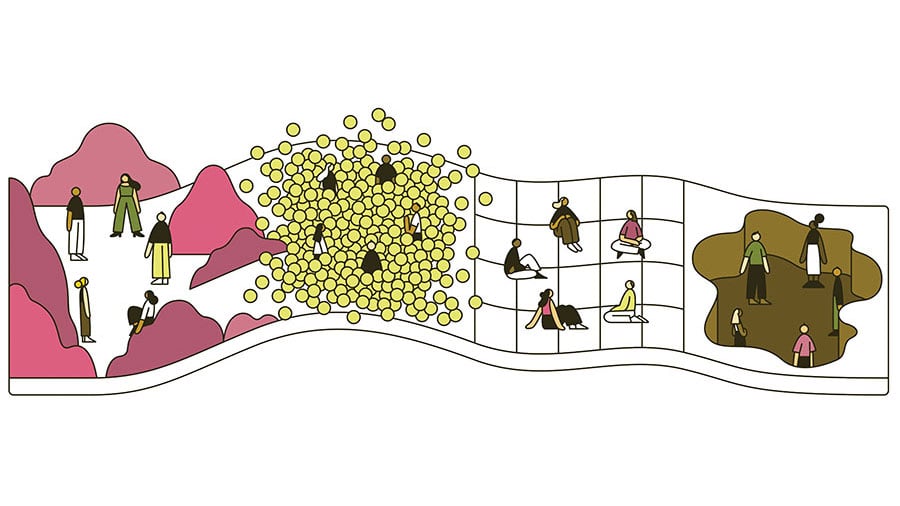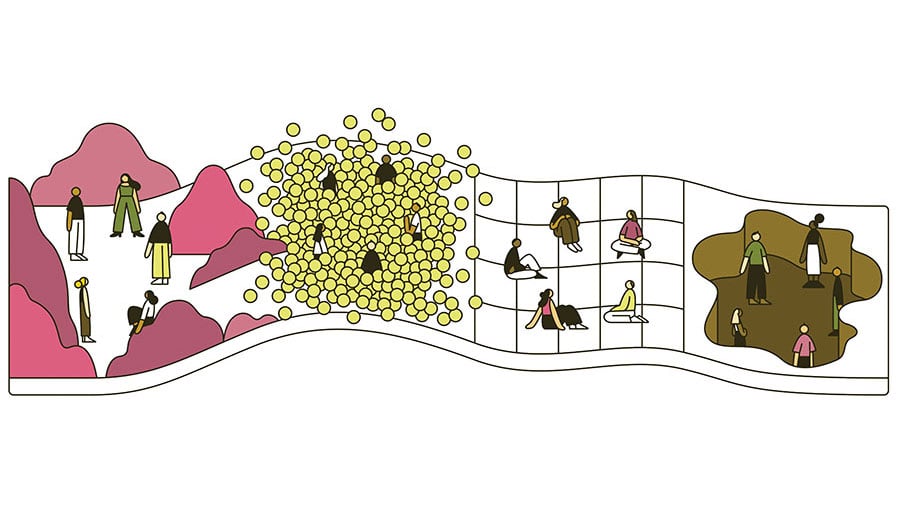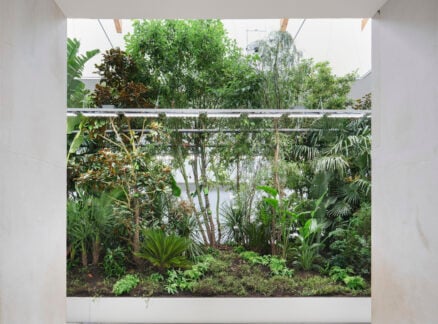
June 9, 2020
The Latest Workplace Design Initiative? Neurodiversity
In a world of heightened sensitivity, designers who pay attention to workers’ sensory intelligence will create environments where people can thrive.

___
As I write this, hunkered down at home in Northern Virginia in the midst of the coronavirus pandemic, the world is participating in a massive, unplanned experiment in remote working. We’re typing and Zooming from our sofas, dining tables, guest bedrooms, and for the lucky among us, dedicated home offices. It’s now clear—even to those who had been skeptics—that most white-collar employees can work effectively from home. The question is, how many will still want to after this is over?
The answers will vary, depending on people’s personalities, type of work, organizational culture, access to technology, and commutes, as well as the ergonomics of their home setups and whether they have kids at home. I know when my kids were young, Mondays in the office felt more like Saturdays because I could finally relax.
This shelter-and-work-in-place experience has confirmed what we at HOK have long been talking about with clients: the awareness that the most productive environments balance quiet areas for heads-down, focused work (which may easily be outside of the office) with collaborative spaces for informal encounters and ideation. There is a place for both, and the socialization is what many are missing now. Studies have shown that employees with the highest levels of satisfaction are those who have choices about where they work, including a blend of traditional in-office and remote work.¹
As we come out of COVID-19 quarantine and determine what our new work norms will be, most of us will emerge with a heightened sensitivity about what we touch, as we seek to avoid infection. And while social distancing continues, some will also experience a hyperawareness about being too close to their coworkers.
This makes HOK’s recent research on designing inclusive work environments that support the needs of neurodivergents—many with hypo- or hyper-tolerances for sensory stimulation—especially relevant.² After all, many of us might now place ourselves in this category. Workplace designers will need to become more attuned to employees’ “sensory intelligence” and intensify efforts to address sensitivities to touch, proximity, noise, light, color, and clutter. Organizations’ ability to do this will make a difference in whether some employees struggle or thrive.
We’ll also need to pay more attention to the “prospect-refuge” theory, which proposes that as early humans evolved, they transitioned to open spaces like savannas where they could find shelter in trees while maintaining a watchful eye over sweeping vistas for predators.³ Now the coronavirus outbreak has threatened our innate desire to feel safe and secure. That need must be fulfilled before employees can flourish.
In the recovery from this global trauma, the workplace must help neurodivergents and neurotypicals feel a sense of control. That means designing diverse spaces, empowering people with options to retreat and feel comfortable as they work. This is our new reality and no longer just a choice.
___
Kay Sargent is a director of HOK’s global WorkPlace practice. For more on HOK’s strategies, see “What Does a Neurodiverse Workplace Look Like?”
¹ For more on how choice of workplace affects employee satisfaction, see “Moving Beyond Open Plan Spaces in Workplace Design,” by Kay Sargent and Betsy Nurse, available online.
² Last year, HOK released its report “Designing a Neurodiverse Workplace,” available online.
³ Prospect-refuge theory was first conceived by the British geographer Jay Appleton in his 1975 book The Experience of Landscape (Wiley). He wrote a revised edition in 1995, which remains a classic on how humans experience space.
___
You may also enjoy “Emerging from a Public Health Crisis, Companies Get Set to Invest in Hygienic Office Design.”
Register here for Metropolis Webinars
Connect with experts and design leaders on the most important conversations of the day.
Recent Viewpoints
Viewpoints
Sustainability News Updates for Q2 2025





